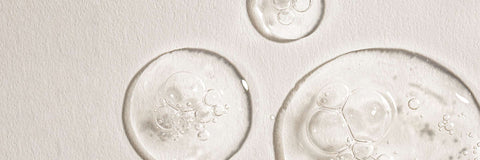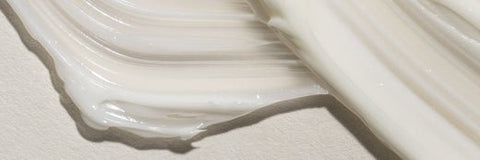You’re probably familiar with aloe vera as that famous DIY skin soother, perfect for cooling aching, raw or red skin. Simply snap a leaf off your aloe vera plant, apply to skin for a whole host of amazing benefits. Full of vitamins and minerals, it can be used both externally and internally, and it certainly is more than just a random household plant.
In this post, we’ll cover what aloe vera is and where it’s from, 10 reasons to use aloe vera for skin, how to use aloe vera, what skin type it’s good for and frequently asked questions about aloe vera for face.
IN A NUTSHELL
Ingredient Category: Humectant, Soother
Main Benefit: Aloe vera has a calming effect on skin and can soothe temporary redness. It also helps to moisturize and protect skin from environmental stressors.
Find It In: So Clean! Facial Cleanser, Nectar of the C Vitamin C Serum, Just Dew It Hydrating Serum, ‘A’ Game Retinol Serum, Eyes Eyes Baby Anti-Aging Eye Cream, Crème de la Cream Brightening Moisturizer, H2 Oh Yeah Hydrating Moisturizer, and Youth Fairy Retinol Moisturizer.
What Is Aloe Vera? Where Is It From?
Aloe vera is an evergreen succulent plant. One of 500 species of aloe, it originated in the Arabian Peninsula.
Its use dates back eons in Greece, Egypt, India, Mexico, Japan and China. In Egypt, it was called “the plant of immortality,” and Egyptian queens Nefertiti and Cleopatra both used it to keep themselves looking their best– or so say the history books.
As a succulent, it thrives in dry conditions and grows wild in many parts of the world. Aloe vera is more than 95% water, hence its excellent capabilities as a moisturizer!
Aloe vera also contains beneficial vitamins and minerals including: vitamins A, C, E, and B12; folic acid; choline; and minerals calcium, chromium, copper, selenium, magnesium, manganese, potassium, sodium and zinc.
8 Reasons to Use Aloe Vera for Skin
1. It moisturizes.
Because it’s rich in water content, aloe helps your skin to retain moisture. It adds natural hydration and helps your skin feel plump, smooth and youthful — particularly if you have dry skin.
2. It soothes.
Probably what it’s most known for, aloe vera for skin can help soothe temporary redness.
3. It’s rich in antioxidants.
This plant is full of polyphenols, which are plant-based nutrients that act as antioxidants and protect your skin from environmental stressors.
4. It can help reduce the look of dark spots.
Aloe vera can help minimize the look of dark spots on the skin. Apply directly to dark spots on skin, neck and hands to help reduce their appearance.
5. It can minimize the look of dark circles.
Aloe for face can be used under eyes to give a more refreshed appearance.
6. It’s gentle.
Good for all skin types, aloe vera offers easy, gentle support for skin.
7. It can reduce signs of aging.
With its high moisture content, aloe vera for skin can help minimize the look of fine lines and wrinkles, helping skin look plump and youthful.
8. It cleanses skin.
Aloe vera for skin helps to create a clean base for nutrients to absorb, so your other products will be properly utilized.

How to Use Aloe Vera
Aloe vera is helpful for a variety of applications. It’s used in skincare products, drinks, cosmetics, capsules, and more.
The most direct way to use aloe vera is to buy your own plant. You can break open the leaves and apply the gel directly to your skin to soothe or add moisture.
You can also make your own aloe vera gel on a larger scale. Chop the leaves into pieces, remove the thorny sides and slice the green leaves away from the gel portion. You’ll be left with chunks of gel. Then puree in a blender to create pure, smooth aloe vera for use on your skin.
To use pure aloe vera as a moisturizer, you can buy the gel ready-made or as an ingredient in another product. All Fleur & Bee’s moisturizers and serums contain aloe leaf juice in order to help skin retain hydration. Here’s how to get the benefits of aloe in packaged skincare products:
- Wash with So Clean! facial cleanser, which includes aloe to cleanse.
- Spritz on some hydrating rosewater toner to balance and prep your skin.
- Treat your skin with one of these aloe-based serums: Just Dew It to hydrate, Nectar of the C to brighten, or ‘A’ Game to smooth and firm.
- Apply Eyes Eyes Baby to the area to depuff and moisturize- our best selling eye cream also features aloe vera!
- Finally, protect and moisturize your skin with an aloe-rich moisturizer: Youth Fairy for anti-aging benefits, H2 Oh Yeah to deeply hydrate, or Crème de la Cream for its brightening properties.
Have a mature aloe plant at home? Here’s how to use pure aloe vera as part of your regular skincare routine:
- Cleanse your skin.
- Break open an aloe vera leaf and squeeze out the gel, use your homemade gel, or buy the gel in its pure form. Apply to your face and neck. Leave on for 5 to 10 minutes.
- Rinse.
You can also mix aloe vera with other ingredients like honey, cucumber, rose water, or tea tree oil to make a DIY face mask. Leave on for 10 to 20 minutes and rinse.

What Skin Type Is it Good For?
The great thing about aloe vera is that it’s great for all skin types, from sensitive to mature. Here’s a breakdown for each:
Sensitive: For the sensitive types, aloe for face offers gentle, soothing moisture. However, be sure to test a small amount of aloe before it for the first time to make sure it doesn’t cause irritation.
Oily: For oily skin, aloe vera provides super light moisture that helps balance your natural oils.
Dry: For dry skin, aloe vera provides plenty of hydration, helping skin to retain moisture. Overuse, however, could potentially dry skin out– so be cautious.
Combination: For combination skin, aloe helps to balance natural oils, adding moisture where it’s needed and not overdoing it where it isn’t.
Mature: For mature skin, aloe vera’s high water content makes an excellent hydrating tool.
Frequently Asked Questions About Aloe Vera
If you have additional questions about aloe vera for skin, we’re here to help.
Why is aloe vera good for skin?
Aloe vera for skin is beneficial because it’s a natural botanical that’s rich in vitamins, minerals and antioxidants including: vitamins A, C, E, and B12; folic acid; choline; and minerals calcium, chromium, copper, selenium, magnesium, manganese, potassium, sodium and zinc.
Can I use aloe vera on my face?
Yes, aloe vera is safe to use on your face both on its own (for short periods of time) and as an ingredient in other skin care products, such as masks, moisturizers or serums.
Is aloe vera safe?
Yes, pure aloe vera is safe to use on the skin. It’s used in an array of skin and hair care products, and even used in juices for its perceived health benefits. Just be sure to check ingredient labels to make sure there aren’t other toxins in the products you’re choosing.
Is aloe vera safe while pregnant?
Yes, aloe vera is safe to use externally while pregnant. Aloe vera supplements or juices are another story, however. Aloe ingested orally is potentially harmful during pregnancy, and the American Pregnancy Association recommends pregnant women avoid it.
Aloe vera side effects. Are there any?
Generally no, aloe vera does not have side effects, although it can potentially cause skin irritation in a select few. It’s best to do a small patch test on your arm before applying elsewhere.
Aloe vera vs aloe vera gel?
Aloe vera is grown as a succulent plant. Aloe vera gel lies within the plant’s leaves. It’s typically extracted for use on its own and as an ingredient in skin and hair care products.
How is it aloe vera gel made?
Aloe vera gel is made by extracting the gel from the interior of the green succulent plant, then blending that gel into a liquid substance. Pure gel has no additives and comes directly from the plant.
Aloe vera vs glycerin
Aloe vera and glycerin are both naturally occurring substances with a wealth of benefits including moisturizing. Glycerin is derived from vegetable oils while aloe vera comes directly from a plant. Both are beneficial for skin in an array of ways including minimizing signs of aging, balancing natural oils, reducing the look of dark spots and more.
Can you eat aloe vera?
Yes, aloe vera can be safe to eat (or drink, as a juice) when properly prepared. The outside leaves need to be removed so only the gel remains. Aloe vera gel is often used in drinks that are purported to be good for digestion and other issues.
Aloe Vera for Skin: Reap the Benefits
Now that you know this handy plant has so many benefits for skin, you’ll likely want to have one around! Just note that in order to ensure a high concentration of active ingredients within the plant, you’ll need to use a mature plant that is at least a few years old.












